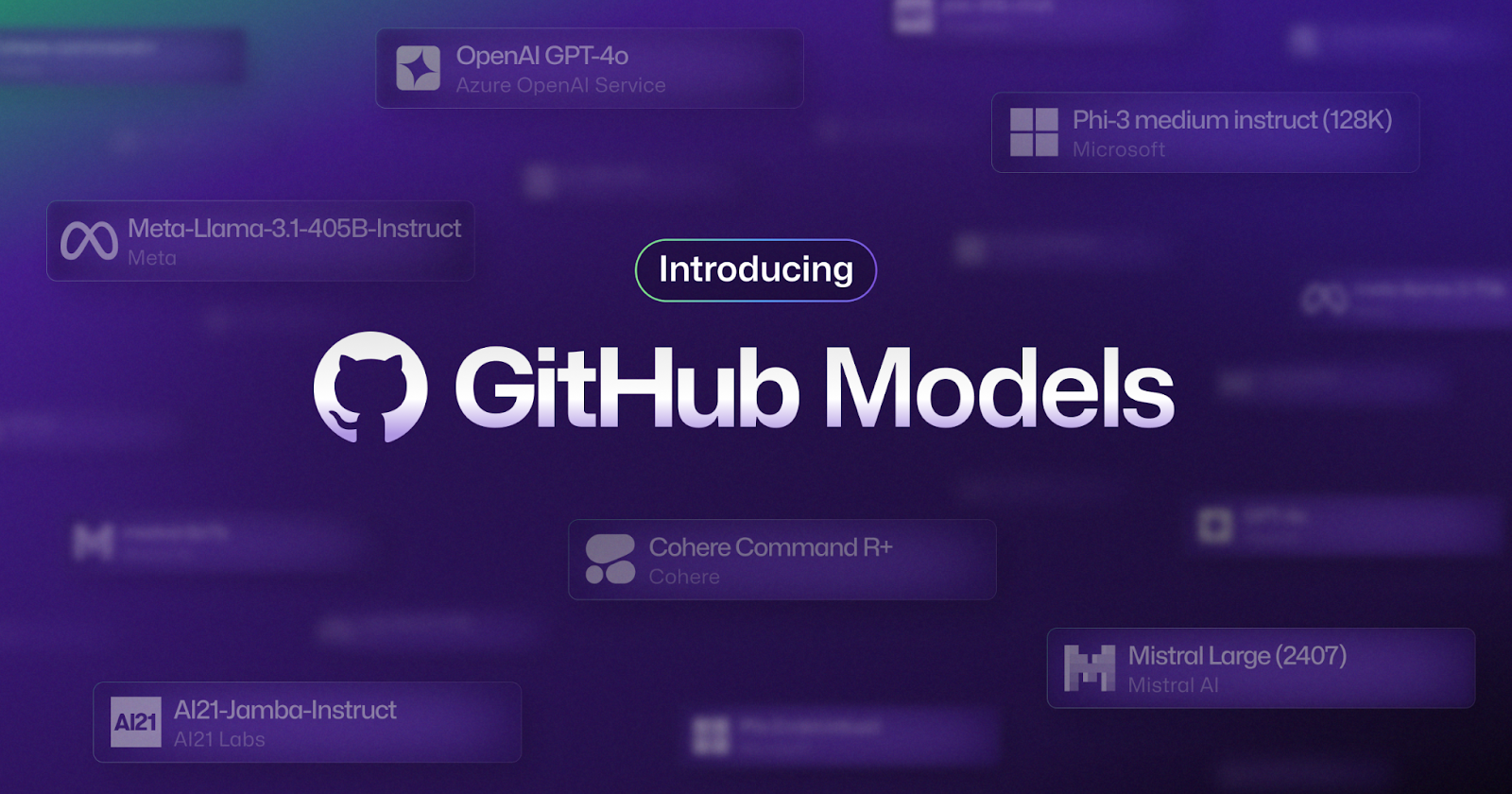Introducing GitHub Models: A new generation of AI engineers building on GitHub

🌈 Abstract
The article discusses the launch of GitHub Models, a new platform that enables developers to access and experiment with industry-leading AI models directly within the GitHub environment. It highlights the goal of empowering more than 100 million developers to become AI engineers and build generative AI applications.
🙋 Q&A
[01] The joy begins in the model playground on GitHub
1. What is the purpose of the interactive model playground on GitHub?
- The interactive model playground on GitHub allows students, hobbyists, startups, and more to explore and experiment with the most popular private and open AI models from companies like Meta, Mistral, Azure OpenAI Service, and Microsoft.
- It enables users to test different prompts and model parameters, compare model capabilities, and learn through hands-on experimentation, similar to how developers learned to code through practice and exploration.
2. What is the commitment to privacy and security regarding the model playground?
- In alignment with GitHub and Microsoft's commitment to privacy and security, no prompts or outputs in the GitHub Models playground will be shared with model providers or used to train or improve the models.
3. How will GitHub Models be used in Harvard's CS50 course?
- Professor David J. Malan will be putting GitHub Models to the test in Harvard's CS50 course this fall, to enable students to experiment with AI more easily.
[02] Spin up Codespaces to bring your ideas to life
1. What is the purpose of integrating GitHub Codespaces with GitHub Models?
- The integration of GitHub Codespaces with GitHub Models provides a "zero-friction path" for developers to experiment with model inference code before incorporating it into their own projects.
- Developers can use sample code for various languages and frameworks in Codespaces to try out different scenarios without encountering "works on my machine" problems.
2. How can developers leverage GitHub Models in their own projects?
- Developers can use the knowledge gained from the playground and Codespaces to set up prototypes or proofs-of-concept within their own applications.
- They can run prompt evaluations in GitHub Actions using JSON files and the GitHub Models command in the GitHub CLI.
- Developers can also build GitHub Copilot Extensions to extend the GitHub platform ecosystem for software development.
- Finally, developers can go to production with Azure AI by replacing their GitHub personal access token with an Azure subscription and credential.
[03] The creator network for the age of AI
1. What is the role of GitHub in the path to artificial general intelligence (AGI)?
- GitHub is positioned as the "creator network for the age of AI", where the source code and collaboration of the interconnected community will be crucial in the path to AGI.
- In the last year, more than 100,000 generative AI projects were created on GitHub, demonstrating the platform's importance in the AI ecosystem.
2. How is GitHub enabling the rise of the AI engineer?
- GitHub Copilot is already writing nearly 50% of the code in files where it's enabled, fundamentally changing the speed of software production.
- With GitHub Copilot Workspace, the vision is to enable millions of developers to code using entirely human language.
- Now, with the launch of GitHub Models, more than 100 million developers can access and experiment with new AI models directly within the GitHub platform.
3. What is the long-term goal of GitHub in democratizing access to AI technologies?
- The goal is to enable a groundswell of one billion developers, which would represent 10% of the world's population, to build and advance breakthroughs that will accelerate human progress for all.